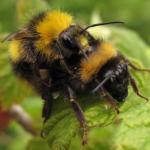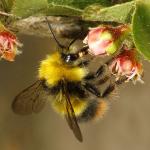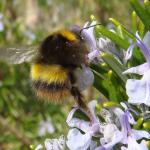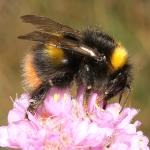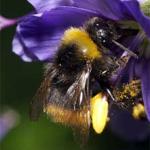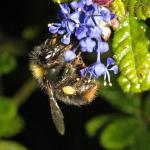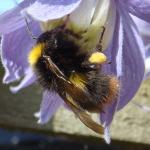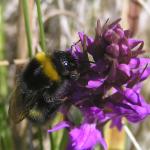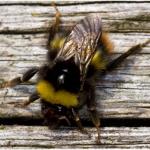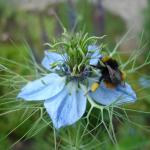Keys and general biology are found in Sladen (1912), Free & Butler (1959), Alford (1975) and Prŷs-Jones & Corbet (1991). A rather small yellow and black-banded bumblebee with an orange tail. It is a frequent visitor to the flowers of soft fruit, making it an important pollinator of these.
It is found throughout Great Britain, although absent from the Western and Northern Isles of Scotland. There is a single locality in Sligo, Ireland. Also recorded from the Isles of Scilly and the Channel Islands. It is widespread in Europe; middle and northern latitudes of Asia, eastwards to northern Mongolia (Løken, 1973).
This bee is not regarded as being scarce or threatened.
B. pratorum is strongly associated with gardens and woodland habitats. Although it may also occur on open grasslands, heath and moorland it is much less frequent there.
Bivoltine in the south, with a smaller late-summer generation; univoltine towards the north. Nest-searching queens are among the first species to emerge throughout its range, being present from March to May, according to latitude. The males are similarly early to emerge, often being seen by the end of May or June.
This species nests underground in old mouse or vole nests, or in old bird nests, especially if these are in holes in trees - or even bird-boxes. The nest is rather small, usually with fewer than 100 workers.
Visits are made to a variety of flowers, both for pollen and nectar.
The cuckoo-bee Bombus sylvestris is well-known as attacking this species.
Profile written:
Proofed: April 2012


